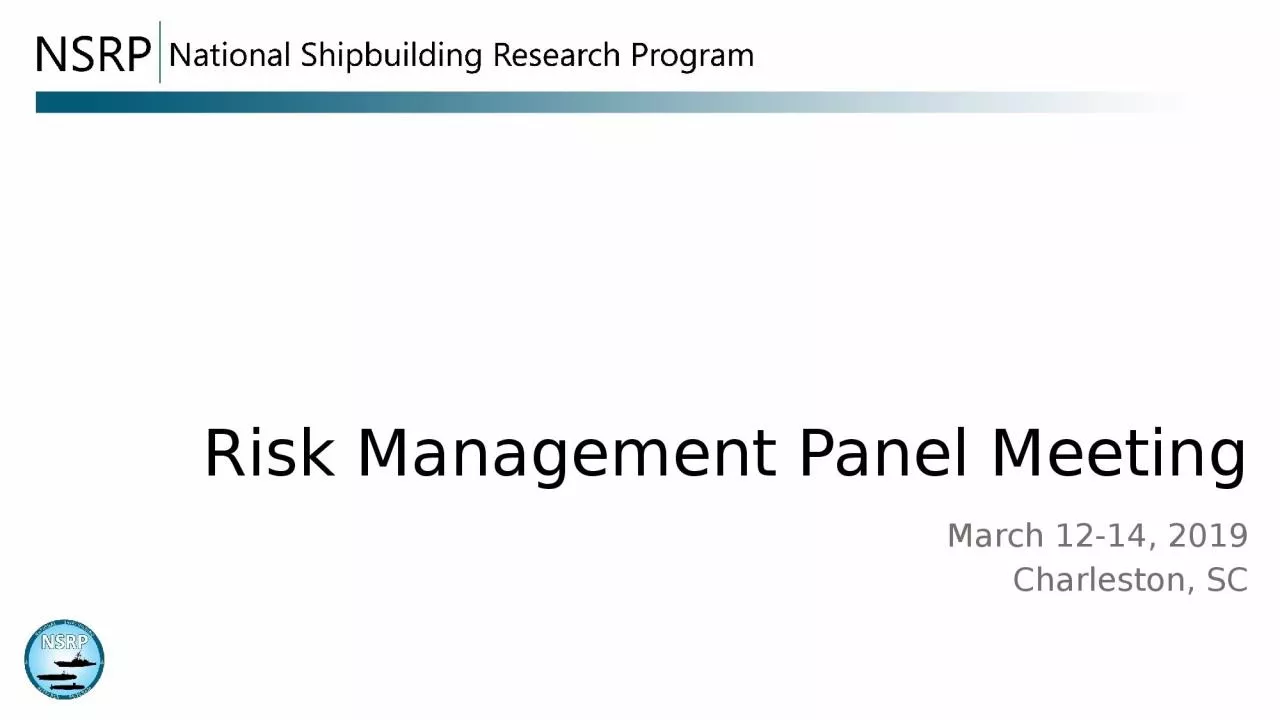

March 1214 2019 Charleston SC Approved for Distribution A Daniel O Chute CIH CSP BSI EHS Services And Solutions East Inc Reston Virginia danielchutebsigroupcom 7036899482 IARC MONOGRAPHS ON THE EVALUATION OF CARCINOGENIC RISKS TO HUMANS ID: 1047388
Download Presentation The PPT/PDF document "Risk Management Panel Meeting" is the property of its rightful owner. Permission is granted to download and print the materials on this web site for personal, non-commercial use only, and to display it on your personal computer provided you do not modify the materials and that you retain all copyright notices contained in the materials. By downloading content from our website, you accept the terms of this agreement.
1. Risk Management Panel MeetingMarch 12-14, 2019Charleston, SCApproved for Distribution A
2. Daniel O. Chute, CIH, CSPBSI EHS Services And Solutions East Inc.Reston, Virginiadaniel.chute@bsigroup.com703-689-9482IARC MONOGRAPHS ON THE EVALUATION OF CARCINOGENIC RISKS TO HUMANSWELDING, MOLYBDENUM TRIOXIDE, AND INDIUM TIN OXIDE
3. AIHA states in the September 2018 issue of The Synergist that “welding fumes cause lung cancer”..
4. The Synergist based it’s conclusions on a 2018 Monograph produced by IARC.IARC – International Agency Research on Cancer –a specialized cancer agency of the World Health Organization. In March 2017, seventeen scientists from ten countries met at the International Agency for Research on Cancer in Lyon, France to evaluate the carcinogenicity of welding, molybdenum trioxide, and indium tin oxide.IARC review of literatures linked welding, molybdenum trioxide, and indium tin oxide to certain cancers.
5. IARC Monograph process starts with a working groupSelection of agents for review:Agents are selected for review on the basis of two main criteria:There is evidence of human exposure andThere is some evidence or suspicion of carcinogenicity. 17 scientists from 10 countriesInternational Experts
6. Population-based cohort studies on cancer and welding or exposure to welding fumesLocationCohort study reviewedExposure categoryCancer typeEnrolmentFollow-up periodZutphen, Netherlands1977-197819861977-19851986-1993Welding fumes/soldering fumesLungProstrateUK1946-19901946-1978WelderLungEurope19922000Welder, in welding shopLungUSAUSA – OHUSA – Tenn.1952-1992197019431952-199619871974Shipyard, welding fumeWelderWelder1097 deaths from lung cancer231 deaths from lung cancerLung, Brain, LeukemiaCanada19912011WelderShipbuilding/repairOccasional welderLung; kidney, urinary bladder; eye melanoma, mesotheliomaPage 113 – 145
7. IARC Findings & Exposure limit valuesAgentsOrgan site/type of cancerSourceWelding FumesLung; Kidney; Urinary bladder; Prostate; MesotheliomaWelding – Arc, gasUV radiationOcular melanomaArc from welding gunsMolybdenum trioxideNo data available for human but causes lung tumor in experimental animal animalsWelding – Arc, gasCountryWelding fumes limit value (8-TWA)Generally5 mg/m3China4mg/m3Netherlands1mg/m3USA, UK, GermanyUse limits for specific metals in welding fumes or respirable dustPage 64
8. Exposure limit values - USACountrySpecific metals in welding fumes/respirable dustUSAIronChromiumCopperNickelManganeseAluminumTitaniumMolybdenumZincBerylliumWelding FumesPage 50; 272
9. Questions for US Shipyard WeldingHow does work described in IARC report compare to current welding process in US shipyard welding? What potential cancer risks have been identified in the IARC report?What welding work is most likely to create welding fume exposures at or above levels of concern?What air monitoring and testing methods are recommended for further evaluation?What existing training, process control and protective measures are shown to be effective for elimination or reduction of these potential hazards?